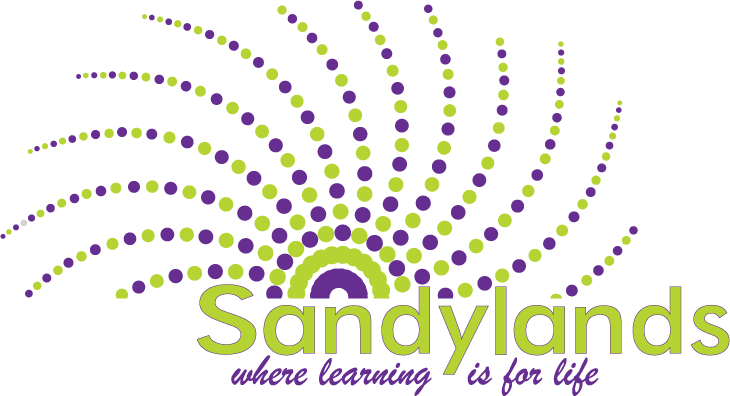Hello!
Below is the home learning for those children who are working from home at the moment.
We are continuing with our daily loom videos and you can watch all of the videos daily. They will be uploaded to the webpage by 9.30am each day. If you want to watch a video back from last week to help you recap previous learning, click on the links below.
Remember you can call the school office for a paper pack of all the work if you prefer. Complete your work in
the Home Learning book you were given over lockdown. If you require another one, please don’t hesitate to
ask.
Send in your work to year3homework@sandylands.lancs.sch.uk
Find out what you are doing today on our Welcome loom video below – this
will run through your timetable for the day
This week’s Daily Loom videos are below
Monday – https://www.loom.com/embed/948bdea4e70046edbfa08d49a4d5058c
Tuesday – https://www.loom.com/embed/c866d6da4a9c4ba582bf57bb30e5bd4b
Wednesday – https://www.loom.com/embed/dfff220b4ad64a9d9f61cdb34ecd4195
Thursday – https://www.loom.com/embed/76863d5831f9418f9ed9b8f921df27ba
Friday
English
This week’s English Loom videos are below
Monday – https://www.loom.com/embed/4a193eb749664296afbfcbd32f8f3b2e
Tuesday – https://www.loom.com/embed/89f348c35abb4dda963a42613d977326
Wednesday – https://www.loom.com/embed/fd92b564420c4b5e929eb94413c58fdc
Thursday – https://www.loom.com/embed/294ebf7c92814826923e2cf2ce863629
Friday
You will find the activities for this week’s English below
English plan below – click on the link
 For a bigger printable version click below
For a bigger printable version click below
https://www.sandylands.lancs.sch.uk/wp-content/uploads/2021/02/22.2.21-y3-English-plan.pdf
Guided Reading

Guided Reading Text and Other Resources
English Tasks 22.2.21 Print Out Copy
 For a bigger printable version click below
For a bigger printable version click below
Maths
This week’s Maths Loom videos are below
Monday – https://www.loom.com/embed/52e9042d87e44fdcaefef1c3ebfa55d4
Tuesday – https://www.loom.com/embed/88d2ac71212143c08ecb3b4148c899d3
Wednesday – https://www.loom.com/embed/baff519d21364162b74bfeac98849288
Thursday – https://www.loom.com/embed/759178bac232457b84ace510068e0ae5
Friday
Maths plan below – click on the link
Maths Resource Sheets
Monday
Monday White Rose Sheet
 For a bigger printable version click below
For a bigger printable version click below
https://www.sandylands.lancs.sch.uk/wp-content/uploads/2021/02/Monday-White-Rose-Sheet.pdf
Tuesday
Tuesday White Rose Sheet
 For a bigger printable version click below
For a bigger printable version click below
https://www.sandylands.lancs.sch.uk/wp-content/uploads/2021/02/Tuesday-White-Rose-Sheet.pdf
Wednesday
Wednesday White Rose Sheet
 For a bigger printable version click below
For a bigger printable version click below
https://www.sandylands.lancs.sch.uk/wp-content/uploads/2021/02/Wednesday-White-Rose-Sheet.pdf
Thursday
Thursday White Rose Sheet
 For a bigger printable version click below
For a bigger printable version click below
https://www.sandylands.lancs.sch.uk/wp-content/uploads/2021/02/Thursday-White-Rose-Sheet.pdf
Friday
Friday White Rose Sheet
 For a bigger printable version click below
For a bigger printable version click below
https://www.sandylands.lancs.sch.uk/wp-content/uploads/2021/02/Friday-White-Rose-Sheet.pdf
Curriculum Overview below – click on the link
home learning curriculum 22.2.21
Science
Learning Objective
To learn how to see a magnetic field.
Key Knowledge questions/ Key Facts/ Key Skills
How can we see a magnetic field?
Key Vocabulary
Magnet, magnetic, non-magnetic, magnetism, attract, repel, poles, north pole, south pole, pushing, pulling.
Learning Activities
We will learn:
Where is the magnetic field strongest around a magnet?
Where do iron filings fall when scattered over a magnet?
What is a ‘field’ of a force?
Watch the lesson and pause the video when shown to complete the task.
Science Lesson 4 Magnetic Fields
 For a bigger printable version click below
For a bigger printable version click below
https://www.sandylands.lancs.sch.uk/wp-content/uploads/2021/02/science-lesson-4-magnetic-fields.pdf
Resources / Website links
How can we see a magnetic field? (thenational.academy)
Art

Learning Objective
To create collage pictures using circles
Folding and cutting circles
Key Knowledge questions/ Key Facts/ Key Skills
What is the best way to create a collage?
Key Vocabulary
Lines, sketch, pencil, shade, 3D, build, create, texture, colour, tone, collage
Learning Activities
Create a collage of your own choosing. Look through this link to help you develop your ideas.
Art Collage...cutting And Folding Circles
 For a bigger printable version click below
For a bigger printable version click below
Draw around a circular shape on paper and carefully cut it out by following the pencil line with the scissors. Show how, by
folding in half, a new shape can be made – semi-circle. By continued folding you can create segments.
Demonstrate how, by cutting and folding variously sized circles and sticking them onto a background, recognisable pictures
can be created.
What could you add to your pictures? Other media such as buttons, sequins, feathers etc. can enhance a picture as can hole-
punched circles for eyes.
How could you better represent specific features, e.g. fur or scales? You could use textured and patterned papers rather than
plain.
Resources / Website links
Coloured papers, gummed papers, scissors, glue, circle templates (lids, plastic 2D shapes), pencils.
History

Learning Objective
Significant people.
Understand how people’s lives have shaped this nation and the wider world.
Key Knowledge questions/ Key Facts/ Key Skills
Who was Elizabeth Fry and why is she a significant person in our nation’s history?
Key Vocabulary
Prison, conditions, Quaker.
Learning Activities
Watch the dramatisation of the life of Elizabeth Fry.
The drama tells the story of her life and how she reformed Newgate prison. It is told in the first person and brought to life with a
mix of drama, movement, music and animation.
We see the moment she attended a Quaker meeting and heard the words of preacher William Savery, urging the congregation
to do good with their lives.
Determined to do good herself, she visited Newgate Prison and, appalled by the conditions there, set out to change things.
She taught the children and sewed their clothes for them. Elizabeth’s actions led to the reform of the prison system across the
country.
After watching the drama read through this link before completing the writing frame:
Elizabeth Fry
https://www.bbc.co.uk/teach/class-clips-video/true-stories-elizabeth-fry/zvh8mfr
Elizabeth Fry Writing Frame
 For a bigger version printable version click here
For a bigger version printable version click here
https://www.sandylands.lancs.sch.uk/wp-content/uploads/2021/02/Elizabeth-Fry-Writing-Frame.pdf
Geography

Learning Objective
To revise the geography of England.
Key Knowledge questions/ Key Facts/ Key Skills
What is the geography of England?
What are some of the human and physical features of England?
Key Vocabulary
Human and physical, land use.
Learning Activities
In this lesson, we will recap our knowledge of the seven continents, and locate the UK on a world map. We will then zoom into
England and look at the different human and physical geographical features.
As this is the last lesson in this unit, choose one of the countries of the U.K. we have studied:
England, Scotland, Wales and Northern Ireland.
Make a poster about that country. On your poster, draw and describe some human and physical features that can be found
there and maybe add some interesting facts such as the height of the mountains or how many extinct volcanoes there are in
Edinburgh.
https://classroom.thenational.academy/lessons/what-is-the-geography-of-england-69j3at
Remember your digimaps log in
LA31EJ
Crukes7801
PE

Learning Objective
To develop gymnastic jumping skills
Key Vocabulary
Throw, catch, accuracy, coordination, target, dance, heart rate, muscles, music, sweat, pulse, fitness, movement, left, right.
Learning Activities
Play with a partner, taking turns to roll a dice. Look at the number you have rolled and then complete the correct jumping
exercises:
Roll a 1 = Perform twenty star jumps
Roll a 2 = Perform twenty tuck jumps
Roll a 3 = Perform twenty pencil jumps
Roll a 4 = Perform twenty jumps with a ½ turn
Roll a 5 = Perform twenty jumps with a full turn
Roll a 6 = Perform twenty squat jumps
The first player to complete all of the activities listed above is the winner!
Don’t forget to tune into Joe Wicks and his P.E. lessons on a Monday, Wednesday and Friday.

RE
Learning Objective
To be able to name a number of different leaders.
To know that Jesus was a famous leader who lived around 2000 years ago.
To understand that Jesus was a teacher who told stories to guide Christians.
To be able to talk about the qualities that make a good leader.
Key Knowledge questions/ Key Facts/ Key Skills
What qualities make a good leader?
Key Vocabulary
Christianity, Christian, God, Jesus, Easter, teacher, leader, to lead, qualities.
Learning Activities
• Can you play ‘Follow my leader’ with some other people in your household? Take it in turns to be the leader and the follower!
• This term we are going to be learning about Jesus the leader. We are going to be thinking about some of the stories that he
told, as well as looking at the Easter story in detail.
• Jesus was a leader who lived just over 2000 years ago. He was a teacher, who often told stories that had a special meaning.
Stories with a special meaning are called Parables.
• Click on the link below to watch an animation of the Parable of the Good Samarian, a parable that Jesus told to show
people that they should always be kind to everyone.
https://www.bbc.co.uk/bitesize/clips/z89jxnb
• Can you think of the names of some different kinds of leaders? They could be leaders in school, sporting leaders or people
that are responsible for leading an entire country.
• How many can you name?
• Not all leaders are good leaders so think about the things that make someone a good leader.
Can you make a list of some of the qualities that make a good leader?

PSHE/ P4C/ Values
Learning Objective
To understand how to recognise an emergency and make a phone call to the emergency services.
Learning Activities
Watch the short film teaching pupils how to recognise an emergency and how to make a call to emergency services.
With the help of animated explanations, Dr Emeka outlines how to recognise an emergency (and how to understand when it
isn’t an emergency).
He goes through the process of calling the emergency services on the phone and understanding what will be asked of you
when you do.
https://www.bbc.co.uk/teach/class-clips-video/pshe-ks2–ks3-how-to-make-an-emergency-call/zg3pxbk
Pupils could learn and acknowledge the LIONEL system that will help them to know what details will be asked of them when
they are on the phone to the emergency services.
L – Location – tell them where the emergency is and where they need to come to.
I – Incident – tell them what has happened.
O – Other services – do you need the ambulance and fire service?
N – Number of people – how many are there involved?
E – Extent of injuries – how badly are they hurt?
L – Location – repeat again where they need to come to.
Students should understand that 999 and 112 are both numbers for the emergency services, but 999 is exclusively for use in
the UK and 112 can be used in the UK and across Europe (and further) to reach the local emergency services.
Activity: List three locations that you know and say the address for each one. E.g. home, grandparents, auntie and uncles,
best friend.
Practise explaining where they are if they don’t know the address – recognising what is near them and explaining what they
can see. They could practise using three key words in order to do so.
Describe an area to someone at home, without using an address, who then has to guess the location they are talking about.


